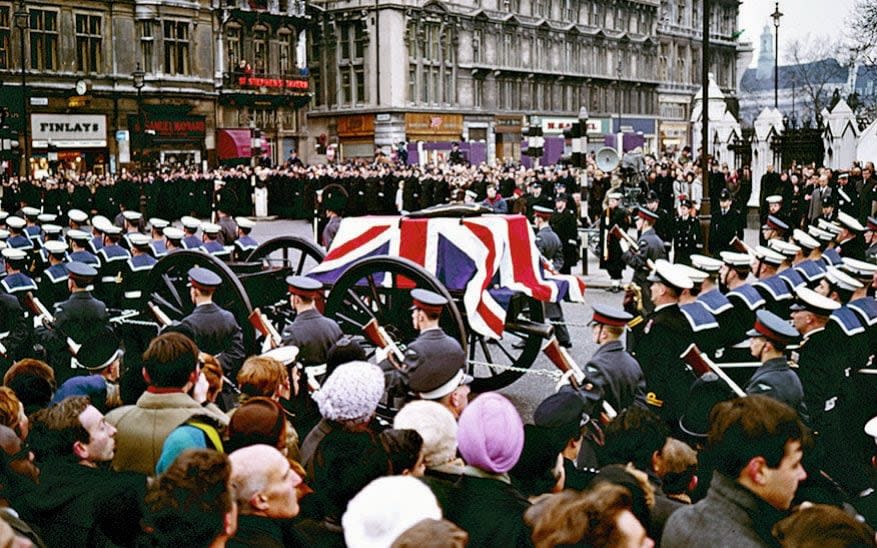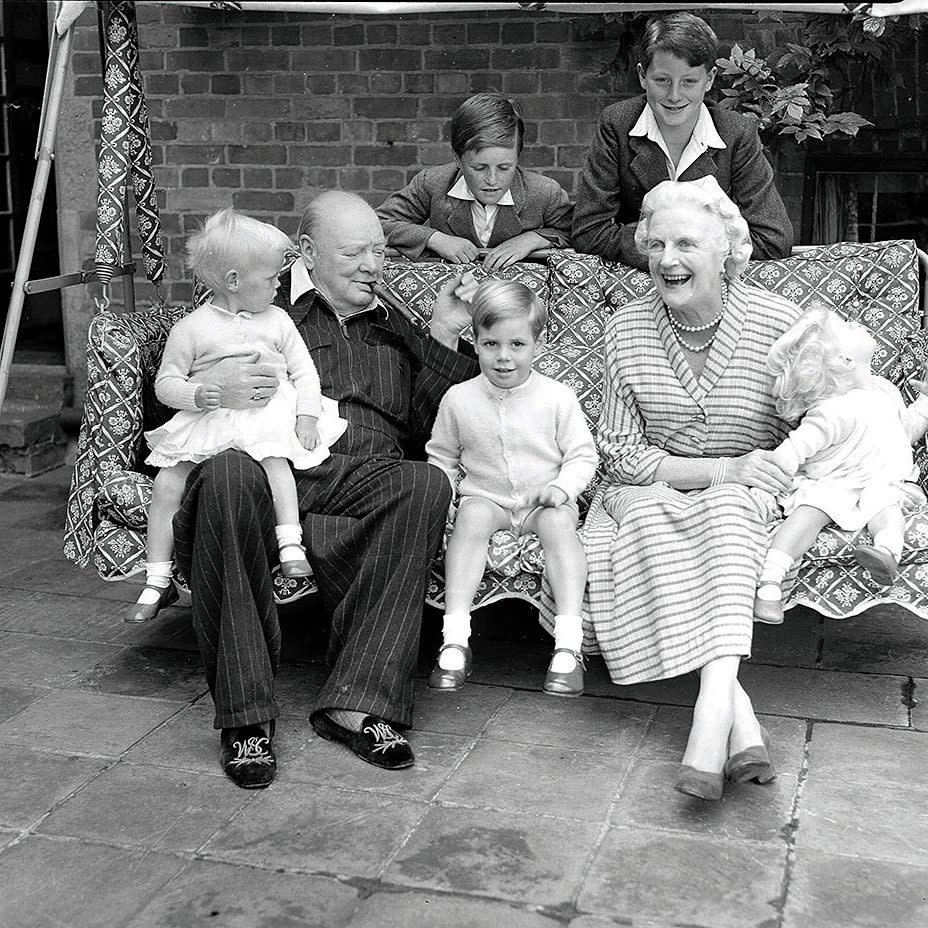Emma Soames: Remembering my grandfather Sir Winston Churchill's funeral

- Oops!Something went wrong.Please try again later.
- Oops!Something went wrong.Please try again later.
I was 15 when my grandfather died. He was 90 and had been very ill so there was nothing unexpected about his death. We went to the funeral – my sister, Charlotte, and my brothers Jeremy and Nicholas – all of us except for Rupert who must have been about five. He stayed at home with nanny to watch it on the television and he is resentful about it to this day.
The funeral was organised by the Duke of Norfolk and the plan had been made years before – it was code-named Operation Hope Not. For three days my grandfather’s body lay in state in Westminster Hall. The coffin was on a dais with a guardsman at each corner, 24 hours a day. It was the most moving thing I’ve ever seen. The quiet, and the reverence, and all you could hear was people shuffling past. There were queues back to Lambeth Bridge. It was just extraordinary, the thousands of people who wanted to pay their last respects.
I went there late one evening with my mother [Mary Soames, Churchill’s daughter] when it was shut to the public. It was totally silent – just the candles and the guardsmen, who changed every half hour - one would stamp his feet and march off very stiffly and another one would come along to replace him.
On the day of the funeral we assembled at Westminster and it was so cold, bone-chillingly cold. The coffin was put on to a gun carriage and pulled by horses, and the women of the family, led by my grandmother, were in carriages, and all the Churchill men followed the coffin on foot.
I was in a carriage with my sister. And out of the windows we could see the pavements crowded with people, three or four deep, all the way from Westminster Abbey to St Paul’s Cathedral. There was no band – the only sounds were the noise of guardsmen marching, and hooves. And shouted military commands.

At St Paul’s Cathedral, we followed the coffin up the steps. It was a heavy, lead-lined coffin, and I will never forget the expressions on the guardsmen’s faces as they carried it – there were a couple of moments when my heart was in my mouth. Inside the cathedral, at the front, was the Queen, already sitting there, and a vast array of European royalty and presidents. The first person I saw was Charles de Gaulle, and the king of Greece, and a couple of other people even I recognised as an ignorant twerp of a 15-year-old.
It was an amazing service, and when we sang The Battle Hymn of the Republic, suddenly a shaft of sunlight came through the high window and fell on the coffin.
It was a day packed with spine-tingling moments like that. Afterwards, we got back in the carriages and went to Tower Bridge, and travelled upriver on a barge to Waterloo. During the journey, all the cranes lining the river bowed down – the union of crane operators had taken the initiative, they hadn’t been told to. That was an extraordinary sight.
We boarded a special train to Bladon, to the little village church near Blenheim where he wanted to be buried. Looking out of the window, we could see hundreds of people on every railway bank, every farmyard gate, every railway crossing – with their children and grandchildren, hats and caps held to their chests, sorrow etched on their faces. It was so moving.
It was very much a state funeral, but as the day progressed, it got more and more private. And it ended at the graveside at Bladon, with just his family: dust to dust and ashes to ashes. My grandmother [Clementine, his wife of 57 years] was composed in her dark veil. My mother was very contained but unbelievably sad – she adored her father. I’m just editing her wartime diaries and one of the greatest themes is the relationship between her and her father. My mother is buried at Bladon too.
It was an extraordinary, sad, but magnificent day, and at the end of it, I had even more respect for my grandfather than I did at the beginning.

